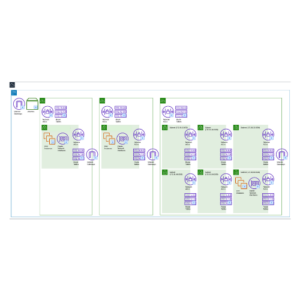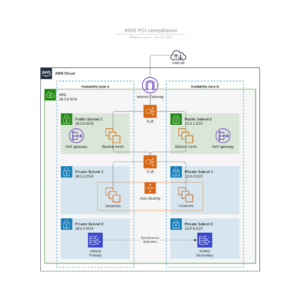Top 5 Reasons to visualize your cloud infrastructure
Public cloud infrastructure like AWS, GCP or Microsoft Azure can provide a lot of benefits to organizations – lower operating costs, outsourced infrastructure security and speed to market. Most organizations have already benefited enormously from moving their infrastructure to the their, or for software companies building a cloud first architecture that enables them to scale faster. Like AWS says on their website:
Amazon Web Services (AWS) is the world’s most comprehensive and broadly adopted cloud platform, offering over 200 fully featured services from data centers globally. Millions of customers—including the fastest-growing startups, largest enterprises, and leading government agencies—are using AWS to lower costs, become more agile, and innovate faster.
https://aws.amazon.com/what-is-aws/
It might sound like hyperbole, but it really is not. In the last year the companies that survived and thrived did so because their digital game was on point. Unfortunately, sometimes organizations may not reap the benefits of public cloud infrastructure because they build too fast or without an architectural plan and do not take advantage of the scaling ability AWS (and other cloud providers) provides. So we’ve found it really beneficial to start with visualizing the cloud infrastructure in a diagram that shows us where we are and where we need to go.
So here are our top 10 reasons to visualize your cloud infrastructure:
1. Understand the current state

Most technology infrastructure tends to grow organically in-spite of the best intentions. It is actually the best intentions to get results or business outcomes fast that leads teams to throw solutions together. Unfortunately this means often not everyone has the full picture of what their architecture looks like. When you draw out the full picture you can often see what resources you actually have, how they are connected, and finally have a full view that you can discuss with your team. A picture is worth a thousand words and no dashboard will show you what the picture will reveal. It is tough, to say the least, to optimize and improve your cloud infrastructure if you don’t understand it in its current state.
2. Security, Security, Security
One of the most important thing such a visualization can give us is a birds eye view of the security gaps or challenges in your infrastructure. In another post we go over the top 10 things you can do to secure your AWS infrastructure. Frankly, it is all quite simple, but as we all know simple is sometimes very hard to do!
3. Management & Governance
Often resources get spun up to meet an urgent need and might not be fully compliant with what your CTO or CISO have laid out as guard rails. With a visual picture you will be able to see how you can improve your compliance. The architectural pictures themselves will also be good artifacts for your own compliance and reporting needs; in addition to giving you the ability to see where you may need to make changes.
4. Find issues & opportunities
When you see your cloud infrastructure, you might be surprised to see some resources you didn’t expect to see. The good news is you are not alone, it is not unusual and now you know. You may also find issues or opportunities for securing your infrastructure or for organizing it better. One client we worked with had over 15 security groups and a lot of subnets that were unused. This is a benign problem, but there are more serious issues we have found, and simplifying your infrastructure will help you secure and scale more easily. Too often teams don’t know what they have or what they are supporting and will inadvertently expose their company to unnecessary risk.
5. Map out the future state

Once you know what you are dealing with. We recommend putting that aside and thinking about what your architecture should be. What do you need to support your company and your customers. Use that as a guide to build an architecture and yes we recommend drawing it out clearly. Then you can look at your current state and see which resources you need to keep or which ones you can evolve or remove entirely.
The Final Word
A picture if worth a thousand words. Our architects find visualization a very rapid way to get the visibility needed to be able to manage and improve an architecture. There are a number of tools that can help you gain that visibility that we can explore in a future post. Reach out if you need any help with visualizing your cloud infrastructure. Good luck! Remember these problems are just that… problems to be solved! It can be fun and very rewarding with the right approach.
Florence Lowe
Founder & CEO. Passionate about data and technology. Favorite quote: “Do or do not, there is no try.” – Master Yoda




